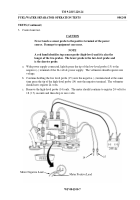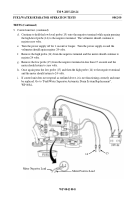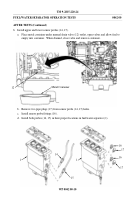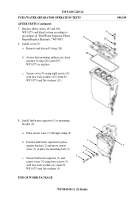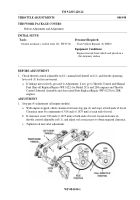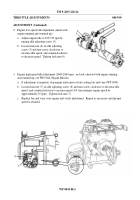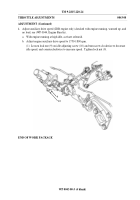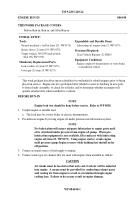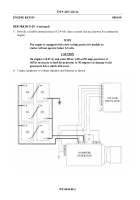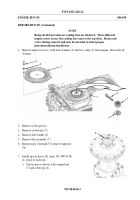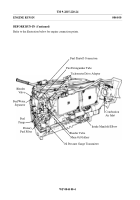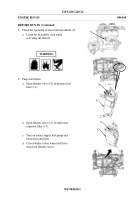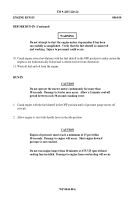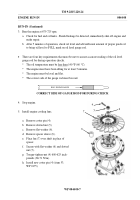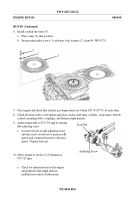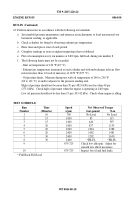TM-9-2815-220-24 - Page 287 of 1563
TM 9-2815-220-24
ENGINE RUN-IN
0044 00
WP 0044 00-1
THIS WORK PACKAGE COVERS:
Before Run-in, Run-in, and After Run-in
INITIAL SETUP:
Tools:
General mechanic’s tool kit (item 121, WP 0176)
Spacer sleeve (2) (item 109, WP 0176)
Torque wrench, 500-2500 inch-pounds
(item 126
,
WP 0176)
Mandatory Replacement Parts:
Lock washers (8) (item 94, WP 0175)
Cotter pin (2) (item 53, WP 0175)
Expendable and Durable Items:
Lubricating oil, engine (item 21, WP 0173)
Personnel Required:
Track Vehicle Repairer (2) 63H10
Equipment Conditions:
Engine coupled to dynamometer or water brake,
or installed in vehicle.
This work package describes run-in schedules for overhauled or rebuilt engines prior to being
placed in service.
Engine run-in is performed after rebuild to assist in breaking in new parts,
to detect faulty assembly, to check for oil leaks, and to determine whether an engine will
operate satisfactorily when installed in a vehicle.
BEFORE RUN-IN
NOTE
Engine leak test should be done before run-in.
Refer to WP 0038.
1.
Couple engine to suitable load.
a.
The load may be a water brake or electric dynamometer.
2.
Pre-lubricate engine by forcing engine oil under pressure into lubrication system.
NOTE
Pre-lubrication will ensure adequate lubrication to engine parts until
oil is circulated under pressure from engine oil pump.
When pre-
lubrication equipment is not available, fill crankcase with lubricating
engine oil (item 21, WP 0173).
Using engine starter, crank engine
until pressure gauge begins to move while holding fuel shutoff in the
off position.
3.
Connect external source of fuel supply to engine.
4.
Connect same type air cleaners that are used with engine when installed in vehicle.
U
CAUTION
Air intake must be located so that only cool, fresh air will be inducted
into engine.
A means must be provided for conducting exhaust gases
and cooling air from engine to avoid re-circulation through engine
cooling fans.
Failure to do so may result in engine damage.
Back to Top

